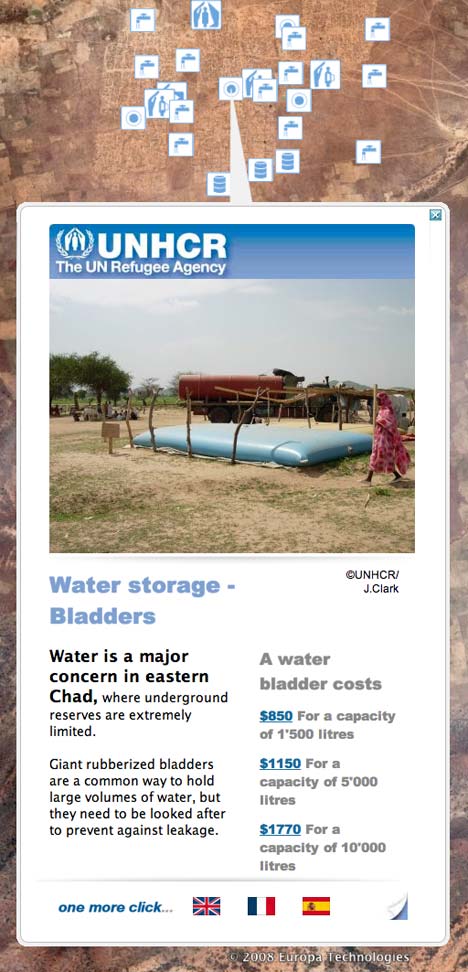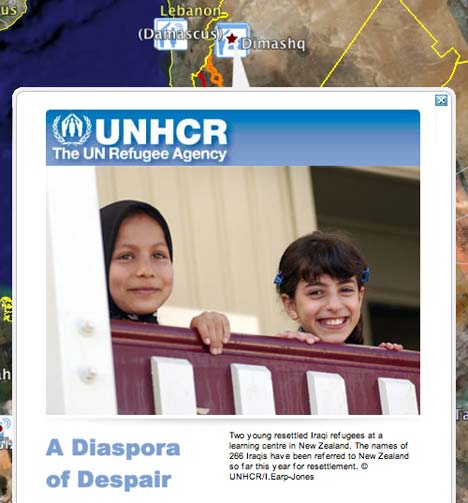The rush of new content for Google Earth hasn’t let up yet. The United Nations refugee agency UNHCR is also releasing a new layer today in collaboration with Google Outreach.
The layer is not to be found among the default layers, but instead from a new launch page on the UNHCR’s website. Here’s the direct KML link, here’s the press release, and here’s a story about it in the UK’s Guardian.

Two things in particular stand out about this layer:
First, it successfully harnesses the high resolution imagery on Google Earth to pinpoint exactly the location of specific components of a refugee camp — in the above case, a camp in Chad. (This is something that the New York Times layer misses out on, as blogged yesterday.)
Second, the popups segue from the specificity of a location into a direct appeal for aid. The idea is that if you can see a specific instance of a need on the ground, you are more likely to contribute. It will be interesting to see if that is the case.
(Just one piece of constructive criticism, however: For some other placemarks, such as those around Damascus, specific local places are pinpointed while the placemark content actually refers to locations far away (New Zealand in one case). I think it is better not to georeference information than to georeference it inaccurately, as then users start to lose confidence in the accuracy of all placemarks. I think that using placemarks as “symbolic” locations markers is a bad idea — you don’t add information, you merely create confusion between those and actual place markers. And it defeats the purpose of using a virtual globe.)

As the UNHCR’s KML is downloadable (rather than a default layer), you can use it with other applications that support KML. In this particular case, however, only Google Earth is likely to have the high resolution imagery of remote locations that allows this layer to come into its own.